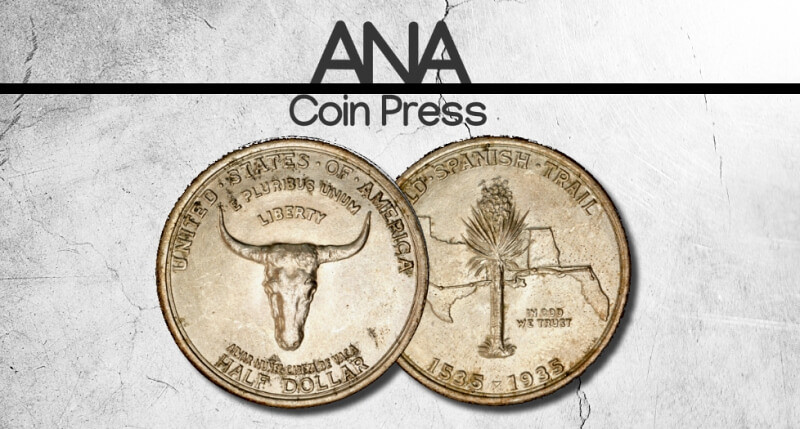
PREV ARTICLE
NEXT ARTICLE
FULL ISSUE
PREV FULL ISSUE
NUMISMATIC LINGUISTICSMitch Sanders' February 2019 blog on the American Numismatic Association web site tackles the subject of numismatic linguistics. Here's an excerpt - see the complete piece online. -Editor  You certainly don't need to be a linguist to enjoy numismatics. But, after studying the many, varied uses of language on coins and currency, you just might become one You can also see linguistic variety in the presentation of country names, which are not necessarily the same in all languages. Sometimes the translation is easy; "Brasil" is obviously Brazil, and you can probably guess that "République Française" is the country English-speakers call France. But it's not always so clear. In German, Germany is "Deutschland." The country we knew as the U.S.S.R. abbreviated itself "C.C.C.P." And you might need to do some searching to figure out that "Confoederatio Helvetica" is the Latin name used by multilingual Switzerland, and that "Magyar Köztársaság" is Hungary in Hungarian. Oh, and coins without a country name? They're probably from Great Britain. The familiar letters of the Latin alphabet are used in English and most European tongues, but other countries use different symbols. For example, the Greek and Russian alphabets are a mix of familiar and unfamiliar letters. Farther afield are Hebrew and Arabic, Korean and Japanese, and the character-based presentation of Chinese. Interestingly, in the global economy of the 20th and 21st centuries, one can find connections to English even in countries where it is not official or widely used: nearly all nations use the same Arabic numerals familiar on American money. Latin is also commonly used for royal titles. Queen Elizabeth's designation as "By The Grace of God, Queen, and Defender Of The Faith" defies sensible abbreviation, but shortening "Dei Gratia Regina Fidei Defensor" to D∙G∙REG∙F∙D fits quite nicely on a coin. And sometimes Latin is used for a touch of gravitas, for example, with "FIDEI SVORVM REGNAT" (He reigns by the faith of his people) on a 1939 Canadian dollar. In the "pun intended" category, wordplay is sometimes an interesting part of numismatic design. In the United States, the "Old Spanish Trail" commemorative half-dollar of 1935 honors Spanish explorer Cabeza de Vaca with an image that conveys the literal meaning of his name: the head (cabeza) of a cow (vaca). To read the complete article, see:

Wayne Homren, Editor The Numismatic Bibliomania Society is a non-profit organization promoting numismatic literature. See our web site at coinbooks.org. To submit items for publication in The E-Sylum, write to the Editor at this address: whomren@gmail.com To subscribe go to: https://my.binhost.com/lists/listinfo/esylum All Rights Reserved. NBS Home Page Contact the NBS webmaster 
|